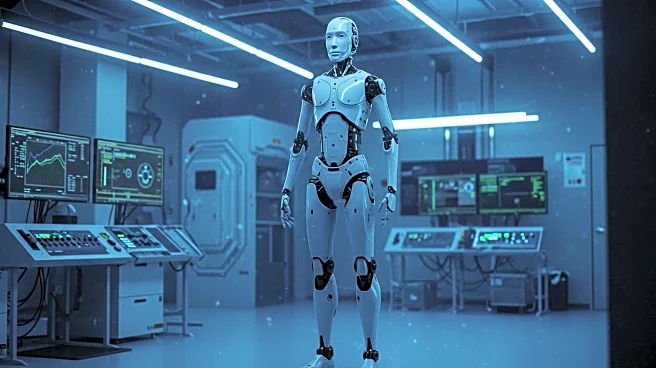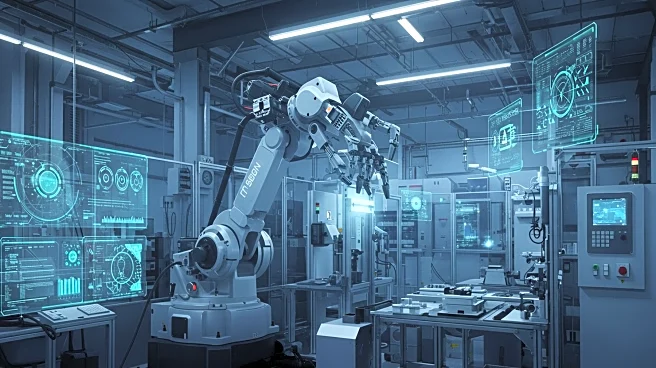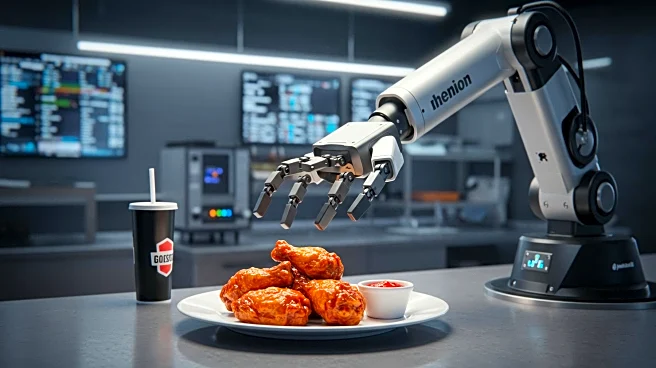What is the story about?
What's Happening?
Boston Dynamics, in collaboration with Toyota Research Institute (TRI), is advancing the capabilities of its Atlas humanoid robot through the development of large behavior models (LBMs). These models are designed to enable Atlas to perform complex, long-horizon manipulation tasks that require both locomotion and dexterous whole-body manipulation. The approach involves training multi-task language-conditioned policies that allow Atlas to manipulate a diverse range of objects and coordinate its body to adapt to various environments. The process includes collecting data through teleoperation, processing and annotating this data, training neural network policies, and evaluating these policies using a test suite of tasks. This initiative aims to create general-purpose robots capable of transforming everyday tasks and environments.
Why It's Important?
The development of LBMs for humanoid robots like Atlas represents a significant step towards automation at scale. By enabling robots to perform a wide range of tasks in existing environments, Boston Dynamics is addressing the challenge of programming robots to handle complex manipulation tasks. This advancement could lead to more efficient and versatile robots in industries such as manufacturing, logistics, and healthcare, where precision and adaptability are crucial. The ability to train robots using diverse task data also suggests potential for improved generalization and performance, reducing the need for specialized programming and increasing the robots' utility across various applications.
What's Next?
Boston Dynamics plans to continue scaling its data collection and task diversity to enhance the capabilities of Atlas. The company is exploring new algorithmic ideas and incorporating diverse data sources to improve the performance of its vision-language-action models. Future research directions include reinforcement learning improvements and deploying advanced architectures for more complex tasks. These efforts aim to further refine the robot's ability to perform open-ended reasoning and long-horizon tasks, potentially leading to breakthroughs in humanoid robot applications.
Beyond the Headlines
The development of LBMs for humanoid robots raises ethical and societal questions about the role of robots in human environments. As robots become more capable of performing tasks traditionally done by humans, considerations around job displacement, privacy, and safety become increasingly important. Additionally, the integration of AI in robotics prompts discussions on the ethical use of technology and the need for regulations to ensure responsible deployment.
AI Generated Content
Do you find this article useful?











